John Satterfield: Father of the Buffalo Airport
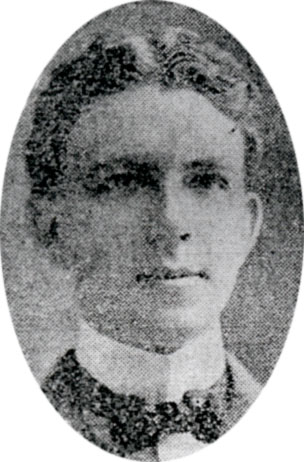
Yale Graduate John M. Satterfield.
Image source: Buffalo Times, BECPL
John Martin Satterfield was the only son of John and Matilda Martin Satterfield. After attending School 16 on Delaware Avenue, he went to the Heathcote School and on to Yale's Sheffield Scientific School where he graduated first in his class in 1898 at age 22.
His family expected him to go into the family business, largely consisting of banking but also including development of land in Idaho and Snyder, New York. He proved more than capable of these tasks, increasing the family's fortunes. And when the Automobile Club of Buffalo was created, he became its first president. He organized one of the first Boy Scout troops in the city. He was an active supporter of the State Teachers College, serving on its board for many years as it worked to construct a new campus on Elmwood Avenue.
The Buffalo Evening News said that his vocation was banking but his avocation was aviation. In 1909 at age 33, the year before he married Rachel Phillips, a classmate of his sister, he founded the Buffalo Aero Club with other local luminaries that included George Urban Jr., Dr. Charles Cary, and Ralph Sidway. He was its first president. They pursued their interests in everything aeronautical.This required building their own airplanes which they did, testing them on the polo grounds of the Country Club at Main and Bailey in Amherst. The planes often crashed; in 1910, the Buffalo Motorist magazine suggested that pilots use a "pneumatic helmet" to protect the head in case of falls.
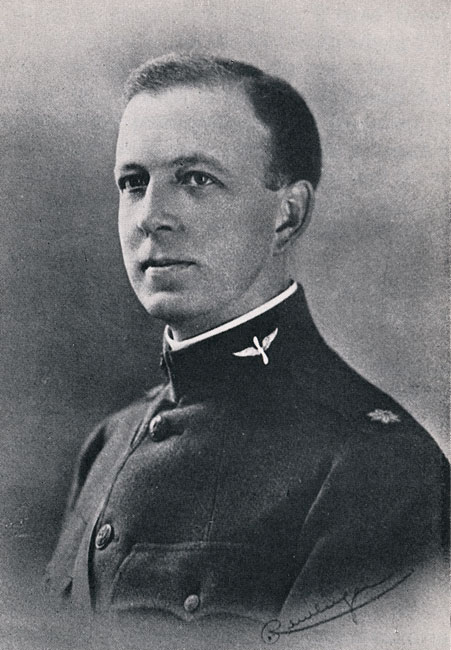
John M. Satterfield in his WWI uniform. Image source: "Glad Did I Live"
With the advent of World War I in 1914, the Aero Club began to look ahead to the possible involvement of the United States. The next year, the second Aero Company, Signal Corps, New York National Guard was formed from 40 members of the Buffalo Aero Club. This was a ground school. They were headquartered in the 65th Regiment building on Masten Avenue. John Satterfield, with Russell W. Bryant of Bryant & Stratton, wrote one of the first books on military aviation during this time.
By 1916, the U.S. Government wanted the services of trained pilots for duty along the Mexican border. The company was sent to Mineola, Long Island for three months' training and then was released by the government. When the National Guard unit returned to Buffalo, the company trained at the new Curtiss Flying Field on Niagara Falls Boulevard until the U.S. entered the war and called up all available air units. Its pilots were dispersed to other newly formed units during the war to train pilots for the war effort.
In 1917, when his company was absorbed into the U.S. military, John Satterfield was made a Captain, but was promoted to Major in 1918.
At age 41 years old, he was too old to serve as a pilot. But his years of work in aviation and his business acumen served his country well. He was attached to General Pershing's staff as chief of the airplane and motors division of the flying corps.
His job was critical because the United States had no airplanes with which to fight, so his task was to purchase them from the French and British for American flyers. He was also responsible for identifying locations for the construction of American air fields and for setting up supply lines for those fields.
During the war, Satterfield was already planning for his postwar project: a permanent commercial airfield for Buffalo.
In 1919, after 18 months abroad in the war, Satterfield returned to Buffalo and began to work with the Aero Club and the Buffalo Chamber of Commerce to generate public interest in establishing an "airport," the new term that replaced "airfield." This was part of a national movement after the war because there were so few airports in the United States. The military was interested because a chain of airports would provide long-distance training experience for pilots. The U.S. Mail was interested because of the advantages of moving mail by air. Neither entity had any funds to construct airports.
The Buffalo Chamber of Commerce also began to talk up advantages of an airport to Buffalo's economic development and prestige. John M. Satterfield was chair of the Chamber's Aero Committtee. His mother described his efforts as "arduous." When an airport was approved and funded, a great deal of land would be needed. Satterfield settled on an area in Cheektowaga, where the flat farmland and proximity to the city center made it ideal.
In 1925, the Buffalo City Council approved the establishment of a municipal airport, and purchased 200 acres along Genesee Street and Cayuga Road in Cheektowaga belonging to the Buffalo Trap and Field Club. (An additional 318 acres would be purchased in 1926, and 37 more acres in 1929.) The Council also asked John M.Satterfield to serve in an advisory capacity in the planning and construction of the airport. Work began in May 1, 1926, as Edwin Ronne, new airport manager (salary, $3,500), moved into one of the farm buildings on the site. He was supervised by the Commissioner of the Buffalo Parks and Public Buildings Department. The airport's total cost of land and construction would be $727,000 ($12,380,940 in 2022 dollars).
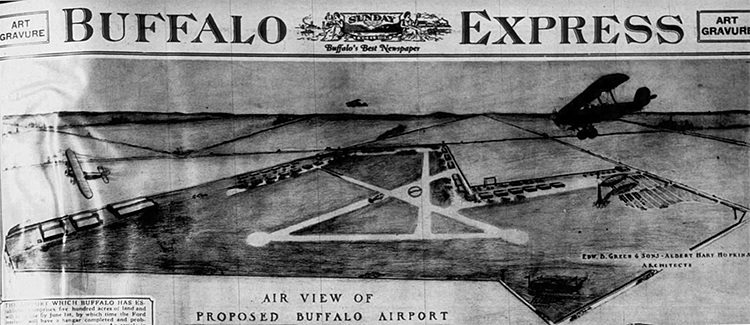
Illustration from 1926 showing an airport concept by E.B. Green & Sons and Albert Hart Hopkins, architects
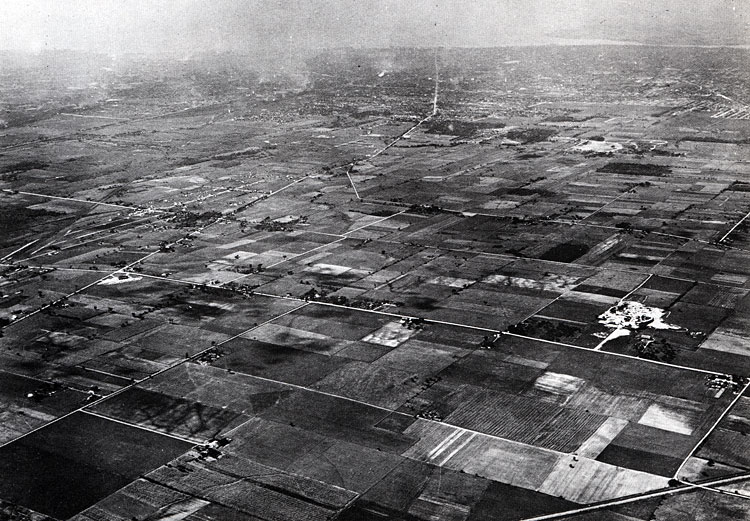
Aerial view of the farmland that would become the airport. Satterfield's mother recalled her son's efforts to persuade farmers to sell land "on which they had spent their lives" for the project. The long, irregular vertical line is Genesee Street. Image source: Buffalo Airport 1926/1976
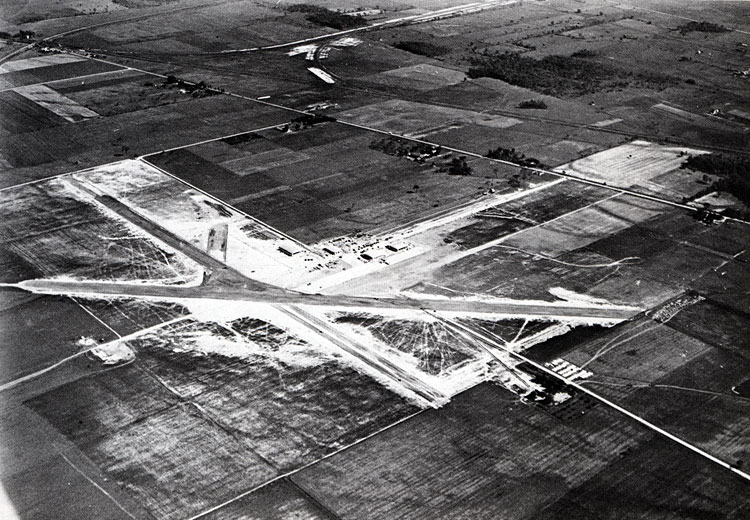
The airport as it looked in 1927 with its cinder and gravel runways. Image source Buffalo Airport 1926/1976

Detail of the airport showing the hangars and administration building at the apex of the runways.
Image source: Buffalo Chamber of Commerce Publication, 1927 (BECPL)
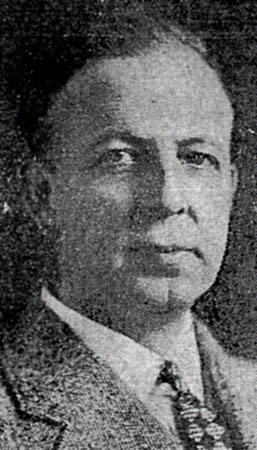
Satterfield in later years.Image source: Buffalo Evening News, BECPL
In August, 1926, The Buffalo Chamber of Commerce published a page of commentary about the airport. This is what it said about John M. Satterfield: "The service that John Satterfield has rendered our city in his work of study, plan and execution of the municipal airport, now nearing completion, is beyond value.
"After years of personal application to the development of interest in and understanding of aviation in general, after a most distinguished war service with major responsibilities for our army aviation at A.E.F. headquarters in France, the time, experience and energy he has given to Buffalo this year in directing the entire development of our Airport calls forth the heartiest appreciation of the Chamber as it does of the city as a whole. We are grateful to John Satterfield for this outstanding service on our Aero committee."
The airport officially opened on September 25, 1926. Within four months, Air Mail Service began. The Curtiss Aeroplane Motor Company leased a hangar at the airport for its U.S. government business. And, in 1927, passenger service began to Detroit.
John M. Satterfield, president of the American Savings Bank since 1916, was stricken in his office on Saturday, February 8, 1932. He died after surgery two days later; he was 56 years old. His bank, which he had been associated with since its founding in 1907, merged with Buffalo Savings Bank the next year, during the deepening Great Depression.
After his death, there were calls to name the airport "Satterfield Field." This did not happen. But the Buffalo Courier summarized its commentary on his passing thus: "It may be fairly said of Major Satterfield that he was the type of citizen who serves well."